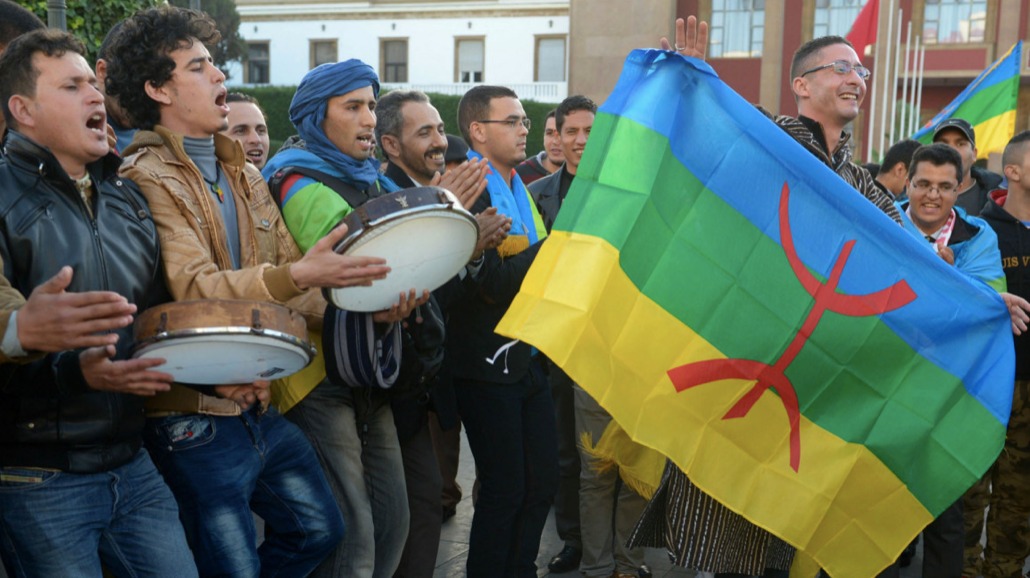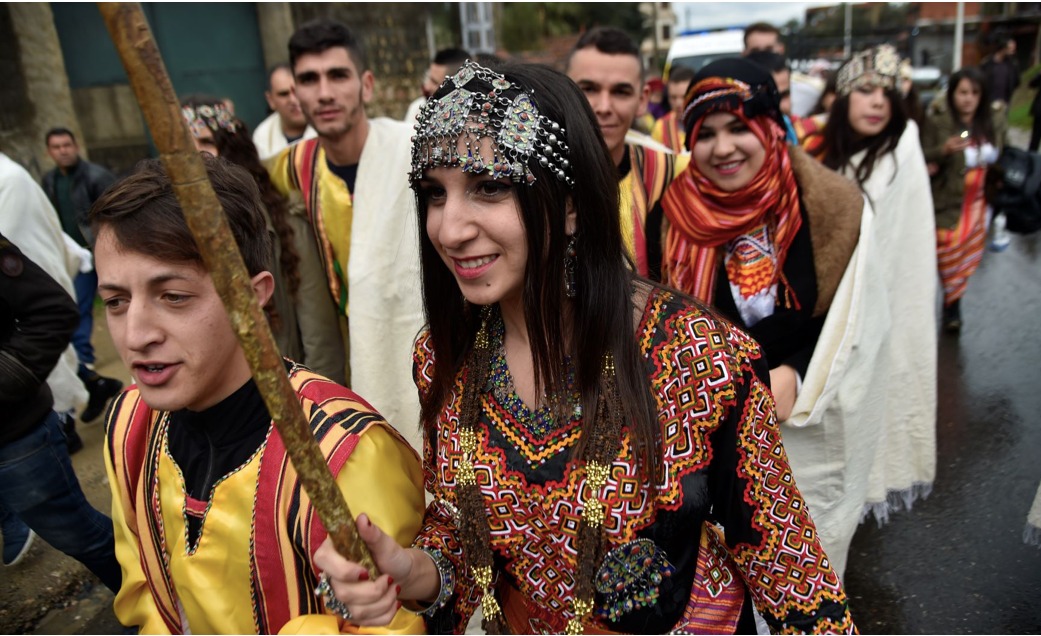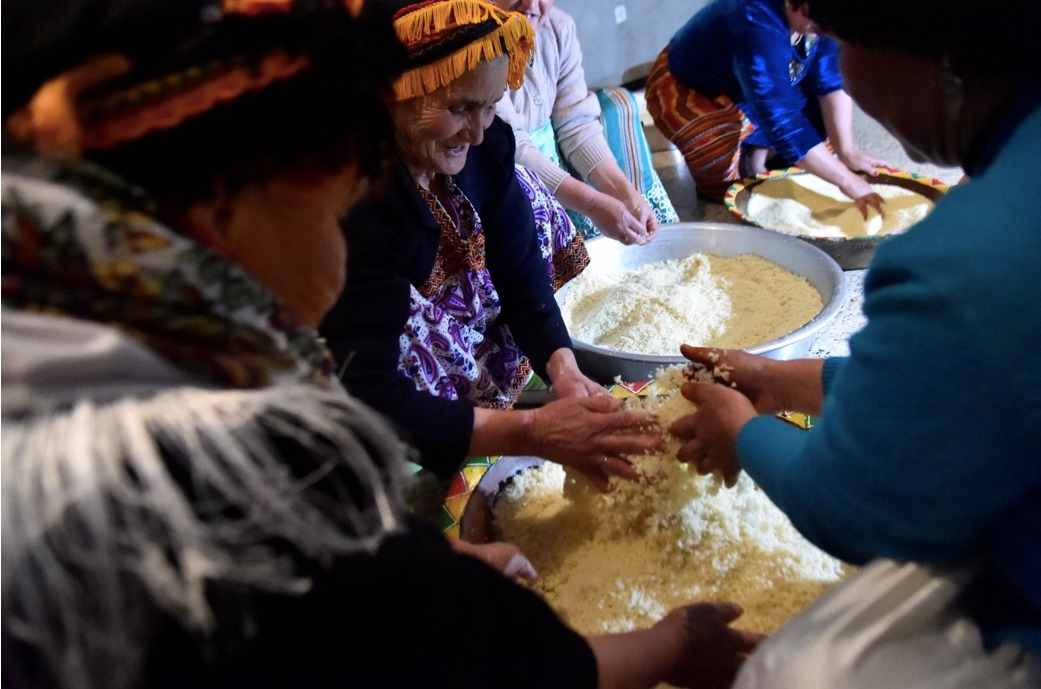His Majesty King Mohammed VI has once again demonstrated that the Amazigh people are an important component of Moroccan society.
For many years, the Amazigh, also known as Berbers, yearned for recognition in Morocco.
Each time they would celebrate their new year – on 13 January – they would take to the street to mark Yennayer. The Amazigh, sometimes called Imazighen, have their calendar derived from the Julian one, used in Europe before the Gregorian one.

In North Africa, it was used to regulate the agricultural seasons. More than anything, the celebration represents the bond between the Amazigh, their land, and the earth’s wealth and generosity.
Yennayer is, therefore, a festival of nature, agrarian life, rebirth, and abundance.
According to scholars, the term ‘Yennayer’ is believed to be a combination of the words ‘Yenn’ (One) and ‘Ayur’ (month) in Amazigh. Fascinatingly, it is also the name given to the first month of their calendar.
The festival took on a formal status in the 60s when the Paris-based Academie Berbere started counting the Amazigh years from 950 BC.

But it was never an official holiday in Morocco. Nonetheless, they would proudly wear their traditional costumes and prepare Amazigh dishes as troupes performed, celebrating the dawn of a New Year in their calendar.
In recent times, the celebration of Yennayer has taken on an added significance to keep their cultural identity alive.
Not too long ago, multitudes of Berbers gathered to celebrate the new year in front of the parliament in Rabat to be able to pass their message.
The Amazigh asked that the authorities consider this holiday a day off and a national holiday. In 2021, Moroccan authorities made a commitment that they would soon recognise it as an official one.
Exactly ten years before that, their language had been recognised as an official language, alongside Arabic. This was enacted in the 2011 Constitution, thanks to King Mohammed VI’s decree that came in the wake of the Arab Spring.
It was fitting for the Amazigh, whose name means proud free people.
On May 3, 2023, King Mohammed VI took it a step further, issuing a decree “to institute the Amazigh New Year’s Day as an official paid national holiday”.
“In this context, His Majesty the King, may God glorify Him, has given His High Directions to the Head of Government to take the necessary measures to implement this High Royal Decision.
“This Royal initiative comes to consecrate the High solicitude of which His Majesty the King, may God preserve Him, does not cease to recognise the Amazigh as an essential component of the authentic Moroccan identity, enriched by the plurality of its tributaries, and shared heritage to all Moroccans without exception.
“It is also part of the constitutional consecration of the Amazigh language as an official language of the country, alongside the Arabic language,” reads a statement by the Royal Office.
The development means that the Amazigh will freely enjoy Yennayer festivities with their families at the turn of the New Year, knowing their day is an official holiday.
The celebrations are primarily based around family gatherings, with most families getting up early in the morning to prepare a range of traditional dishes clad in traditional clothes.
Commonly, they prepare Couscous, with some hiding almond pieces with the promise of entrusting whoever finds it with the keys to the family’s food storage room.
Other dishes common in the celebrations are “tagola,” a combination of corn, butter, ghee, Argan oil, and honey, and “irkmen,” a thick soup made from fava beans and wheat.
Music, dancing, and parades also take centre stage, with most songs expressing love, prosperity, and fertility.
Coincidentally, the year’s beginning coincides with the flowering of almond trees, making it an excellent occasion to hope for agricultural prosperity.

For the rural folk, the day is about resolving misunderstandings and exchanging food with neighbours.
The move by His Majesty The King promotes religious and cultural pluralism in the North African country.
It is also seen as an essential step for Moroccans to reconcile with their history and cultural identity.
The Amazigh people’s population across North Africa – in countries including Morocco, Tunisia, Libya, and parts of Egypt – is estimated to be 30 million. Morocco has the highest number of Amazigh natives.
Ahead of the Gregorian calendar by 950 years, the Amazigh calendar’s first day falls on 13 January yearly. Other Amazigh communities in Tunisia, Libya, and Egypt start Yennayer celebrations on 12 January.
In some instances, the celebrations go on for three days. When the year 2024 kicks off in the Gregorian calendar, the Amazigh will mark the year 2974.


